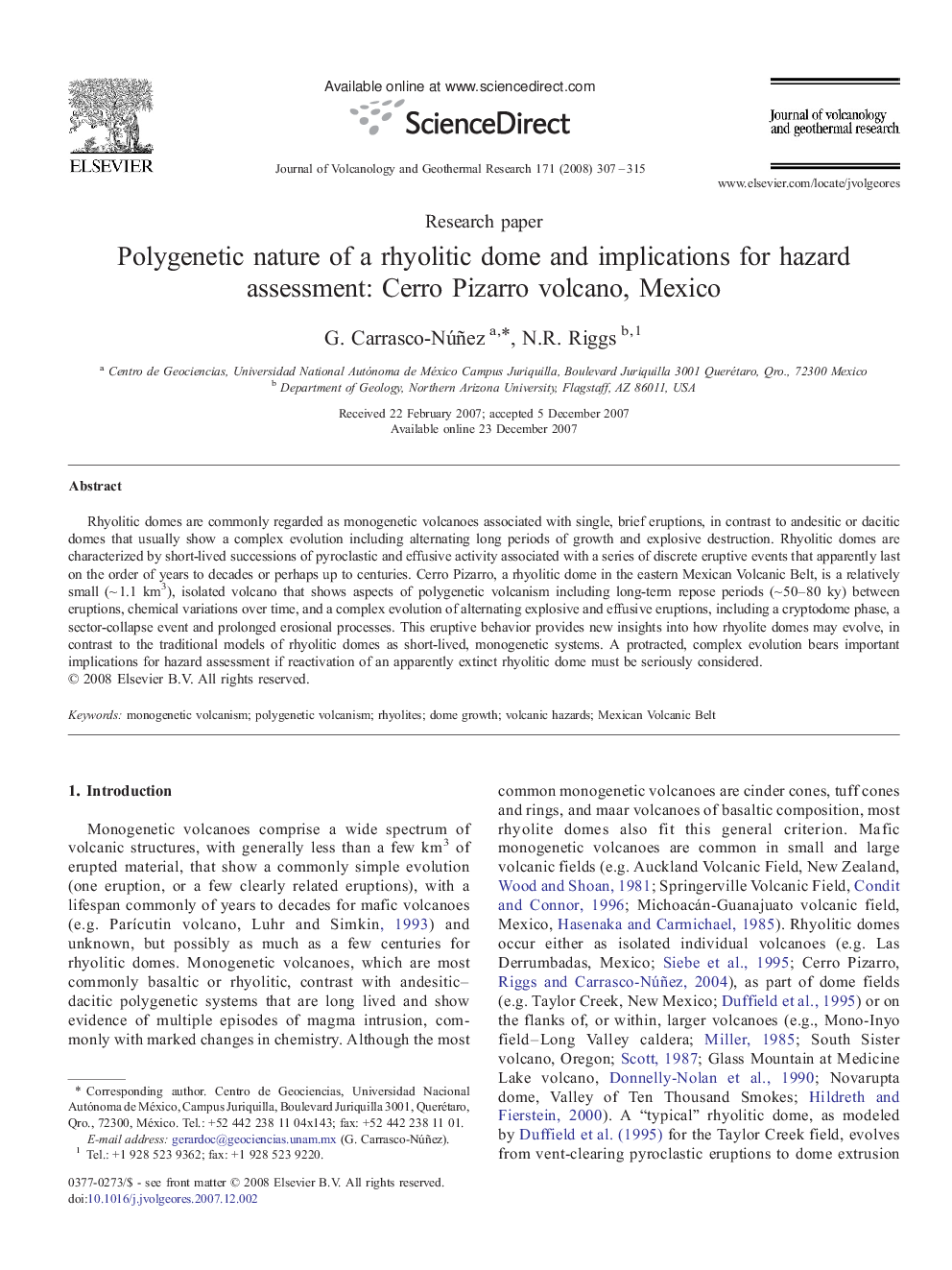| کد مقاله | کد نشریه | سال انتشار | مقاله انگلیسی | نسخه تمام متن |
|---|---|---|---|---|
| 4714850 | 1638451 | 2008 | 9 صفحه PDF | دانلود رایگان |

Rhyolitic domes are commonly regarded as monogenetic volcanoes associated with single, brief eruptions, in contrast to andesitic or dacitic domes that usually show a complex evolution including alternating long periods of growth and explosive destruction. Rhyolitic domes are characterized by short-lived successions of pyroclastic and effusive activity associated with a series of discrete eruptive events that apparently last on the order of years to decades or perhaps up to centuries. Cerro Pizarro, a rhyolitic dome in the eastern Mexican Volcanic Belt, is a relatively small (~ 1.1 km3), isolated volcano that shows aspects of polygenetic volcanism including long-term repose periods (~ 50–80 ky) between eruptions, chemical variations over time, and a complex evolution of alternating explosive and effusive eruptions, including a cryptodome phase, a sector-collapse event and prolonged erosional processes. This eruptive behavior provides new insights into how rhyolite domes may evolve, in contrast to the traditional models of rhyolitic domes as short-lived, monogenetic systems. A protracted, complex evolution bears important implications for hazard assessment if reactivation of an apparently extinct rhyolitic dome must be seriously considered.
Journal: Journal of Volcanology and Geothermal Research - Volume 171, Issues 3–4, 20 April 2008, Pages 307–315